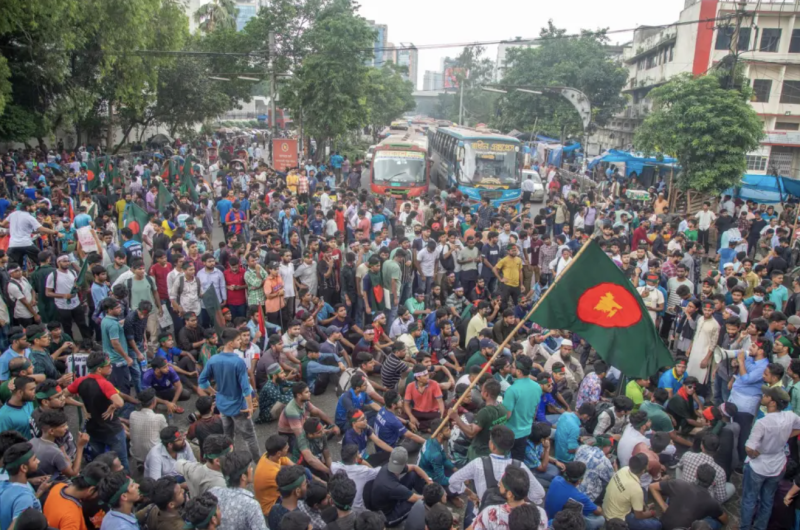
More than 100 students were injured across Bangladesh on Monday, June 15, in violent clashes between demonstrators calling for an end to a government job quota system and supporters of the ruling Awami League party, according to police and witnesses.
The unrest marks the first major challenge to Prime Minister Sheikh Hasina’s government since she secured a fourth consecutive term in January’s election, which was boycotted by the main opposition parties.
The nationwide protests began earlier this month after the High Court ordered the government to reinstate a 30% job quota for the descendants of freedom fighters from the 1971 War of Independence.
Despite the Supreme Court suspending this order for a month last week, demonstrations have continued and intensified. The situation escalated on Sunday night when Hasina refused to meet the students' demands, stating that the issue was under judicial review.
Hasina’s comments, which labeled quota opponents as “razakar” — a term historically used for those who allegedly collaborated with the Pakistani army during the war — prompted thousands of students to leave their dormitories at Dhaka University to join the protests.
Foreign Minister Hasan Mahmud accused the protesters of attempting to transform the anti-quota movement into an anti-state campaign, and asserted that the government would not tolerate any instability.
On Tuesday, June 16, the violence continued, with at least five people reported dead and scores injured as clashes broke out between students and government supporters, who were bolstered by police firing tear gas. Nationwide protests saw tens of thousands of students join the demonstrations for a second consecutive day, blocking major highways and railways.
In Rangpur, police used rubber bullets and teargas to disperse protesters who were hurling stones, resulting in one student's death, though the exact cause remains unclear.
In the capital Dhaka, heavy police presence could be seen outside Dhaka University, where one student was found dead.
Meanwhile, in Chittagong, three people, including two students, were killed, though local police claimed they did not use force in the city.
The demonstrations underscore growing frustration over high youth unemployment and the attractiveness of government jobs, which offer better job security and regular wage increases compared to the stagnant private sector.
Bangladesh’s public sector job system reserves 56% of positions for various quotas: 10% for women, 10% for people from underdeveloped districts, 5% for indigenous communities, and 1% for people with disabilities.
Protest leader Nahid Islam emphasized that the movement extends beyond student grievances, calling for continued marches and rallies until their demands are met.
“The movement is not just about students,” Islam said. “There has been incitement from the highest levels of government to suppress this movement, and it is now up to the common people to take to the streets.”
